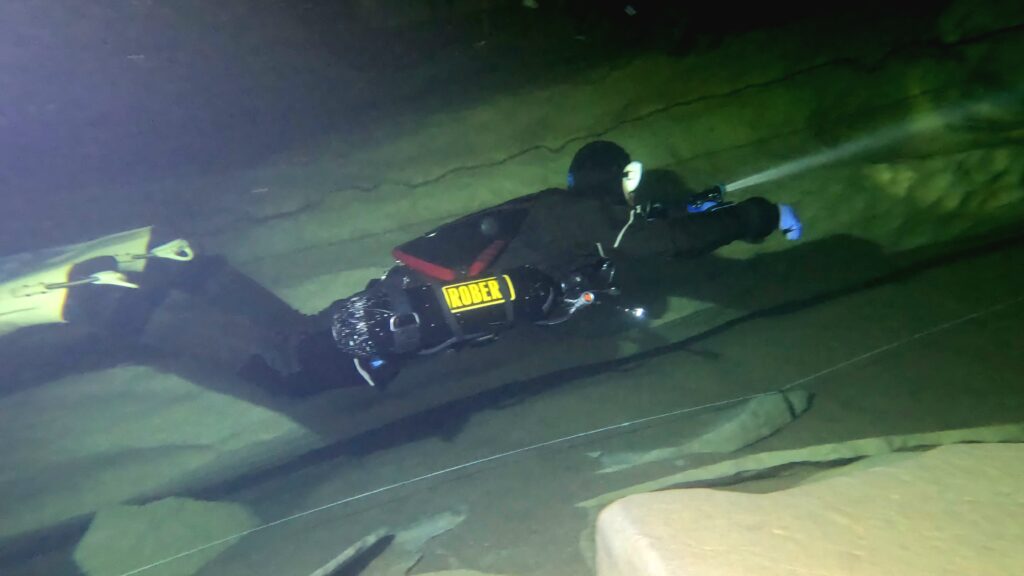Overhead Diving Training
Scuba diving is not only about discovering the incredible underwater world of coral reefs or wreck diving, but also about exploring the mysterious, breathtaking caves and flooded mines. Overhead diving, which involves diving in closed spaces, is an extraordinary adventure that allows you to discover places that are inaccessible to most people. The crystal-clear waters of the cenotes in Mexico, the spectacular rock formations in French caves, and the unique atmosphere of abandoned mines in Central Europe – each of these locations offers unforgettable experiences that will stay with divers forever.
Cave diving and mine diving are also unique challenges that require appropriate training, skills, and specialized equipment. Safety, training, and knowledge are crucial in these environments to fully enjoy the beauty and magic of these extraordinary places. In this article, we will guide you step-by-step through professional overhead diving training and show you how to prepare for safe exploration of these extraordinary underwater worlds. We invite you on a fascinating journey that might change your life and make you fall in love with underwater caves and mines forever!
Differences Between Cavern and Cave Diving
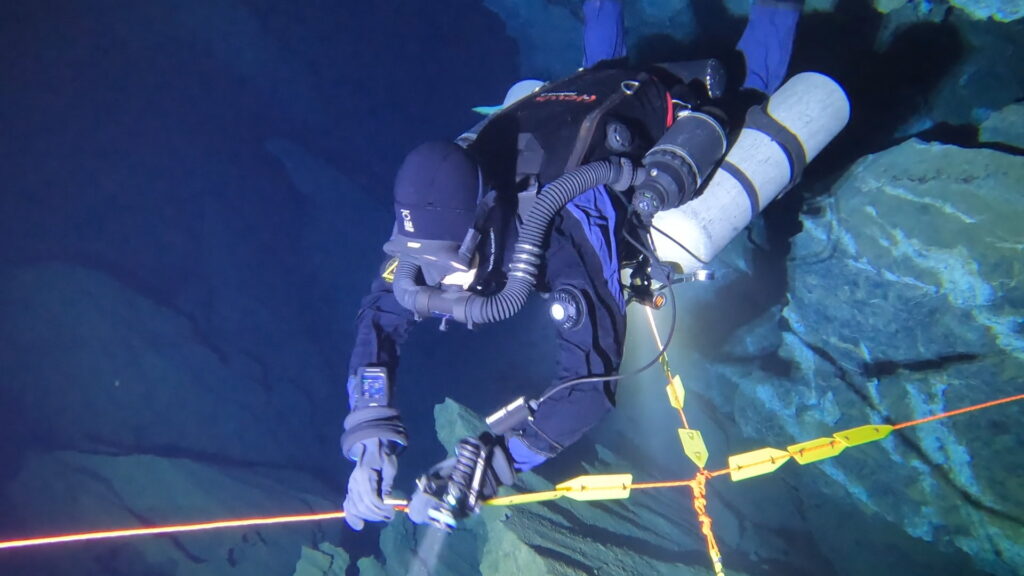
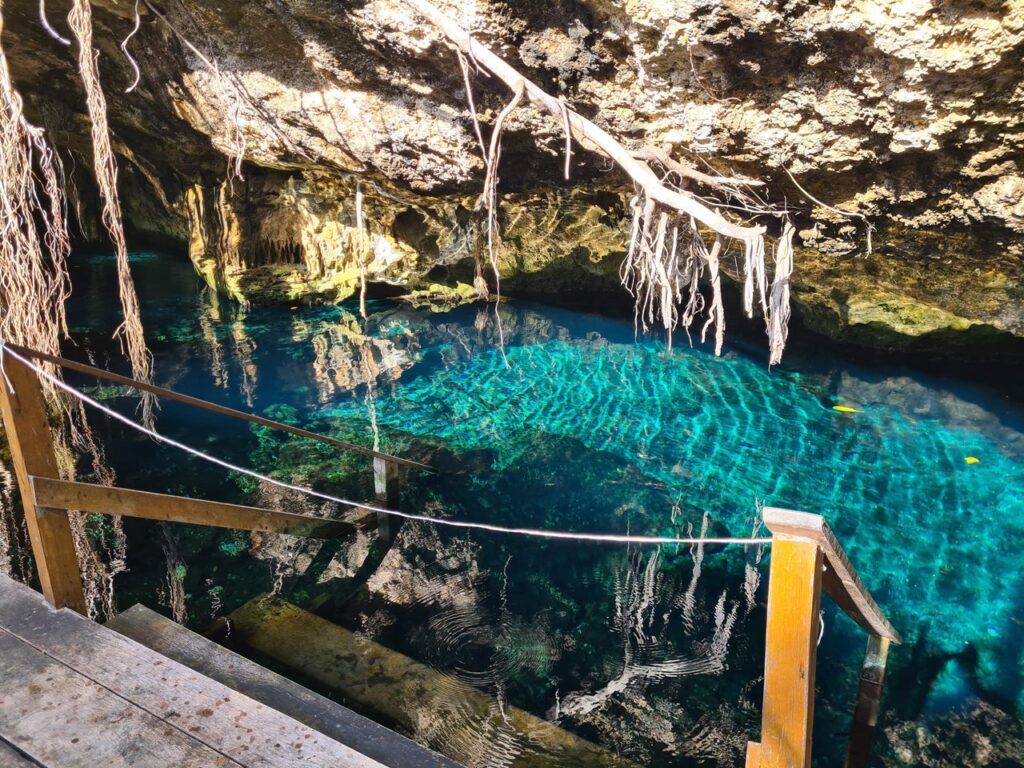
Let's start by discussing the differences between cavern and cave diving.
The cavern zone is a gentle transition from open water to overhead spaces – natural light is still available, and penetration is limited, making it safer and more accessible for beginner divers. On the other hand, a cave is an environment of complete darkness, where narrow passages between boulders (restrictions) can sometimes occur. Caves also require advanced navigation procedures, redundant systems, and decompression dives. The transition from cavern to cave diving reflects the increase in risk and the need to follow the highest training standards.
| Feature | Cavern | Cave |
|---|---|---|
| Light | Natural daylight in the entrance zone | Complete darkness, no natural light |
| Penetration | Up to 60 meters from the surface, up to 21 meters deep | Unlimited within training limits |
| Space | No narrow passages; room for 2 divers | Narrow restrictions possible |
| Decompression | No-decompression diving | Decompression dives, jumps, gaps, circuits, traverses |
| Equipment | Standard for cavern (twin tanks, 1 line) | Advanced: multiple reels, redundant systems |
| Risk | Low–medium | High; requires Full Cave Diver certification |
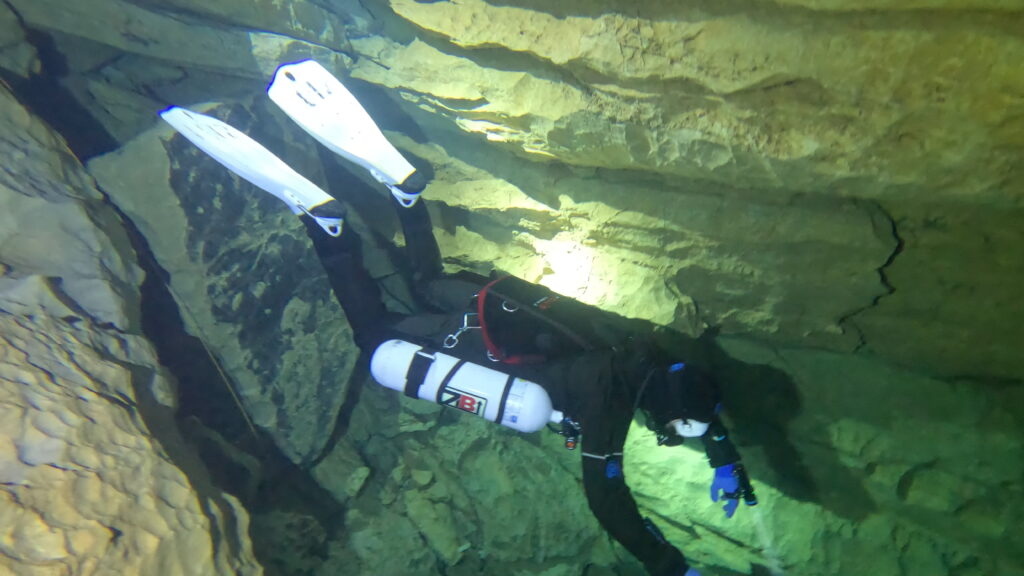

Requirements for Overhead Diving Training
Note! The overhead environment – i.e., enclosed spaces like caves and mines – is exceptionally demanding and unforgiving of mistakes. From the very beginning of training, a diver must understand that any uncontrolled movement of the hands or fins can stir up sediment from the bottom, reducing visibility completely. In these conditions, it's easy to become disoriented, have an accident, or worsen the conditions for other teams in the cave.
Therefore, proper preparation – physically, mentally, and technically – is crucial. A candidate for overhead training should:
- Maintain perfect buoyancy and perform skills learned in previous courses with ease,
- Be in good physical and mental condition,
- Have a well-configured, streamlined twin tank or CCR setup,
- Master valve handling in Twinset or Sidemount configurations,
- Be skilled in working with a reel or spool (e.g., learned during wreck diving courses),
- Make conscious and economical movements underwater (frog kick, modified frog kick, backward kick, helicopter kick) without disturbing sediment,
- Stay calm and react quickly in stressful situations or poor visibility conditions,
- Be committed to continuously improving skills.
Solid technical and mental preparation is the foundation for safe and effective overhead training.
Cavern Diver Course – The First Step in Overhead Diving

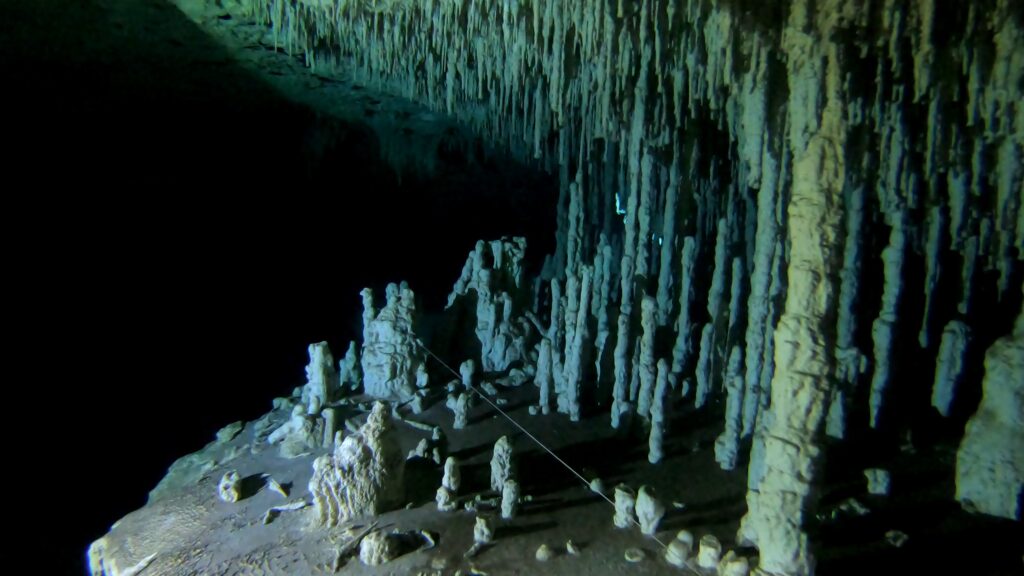
A cavern is an underwater space in the entrance zone of a cave, where natural daylight still reaches. Such places can be found worldwide, with the most famous being the cenotes in Mexico, caves in Florida, or underwater caverns in Europe, such as in France or Mallorca.
The Cavern Diver course is designed for those who already have an Open Water Scuba Diver certificate (or equivalent) and at least 25 logged dives. The minimum age is 18 (or 15 with parental consent).
Upon completing the course, participants will be qualified to dive in caverns without direct instructor supervision, provided they adhere to strict safety guidelines:
- Dive only within the daylight zone,
- Penetration limited to 60 meters (200 feet) from the surface,
- Maximum depth of 30 meters (100 feet),
- Gas consumption limited to 1/3 of a single tank or 1/6 for a twin tank setup,
- Continuous guideline maintenance is required,
- No decompression dives,
- Avoid narrow spaces where two divers cannot pass each other comfortably,
- Perform safety stops as needed,
- Use specialized cavern diving equipment.
The Cavern Diver course is a vital first step that opens the door to further overhead exploration.
Intro to Cave Course – Developing Cave Diving Skills
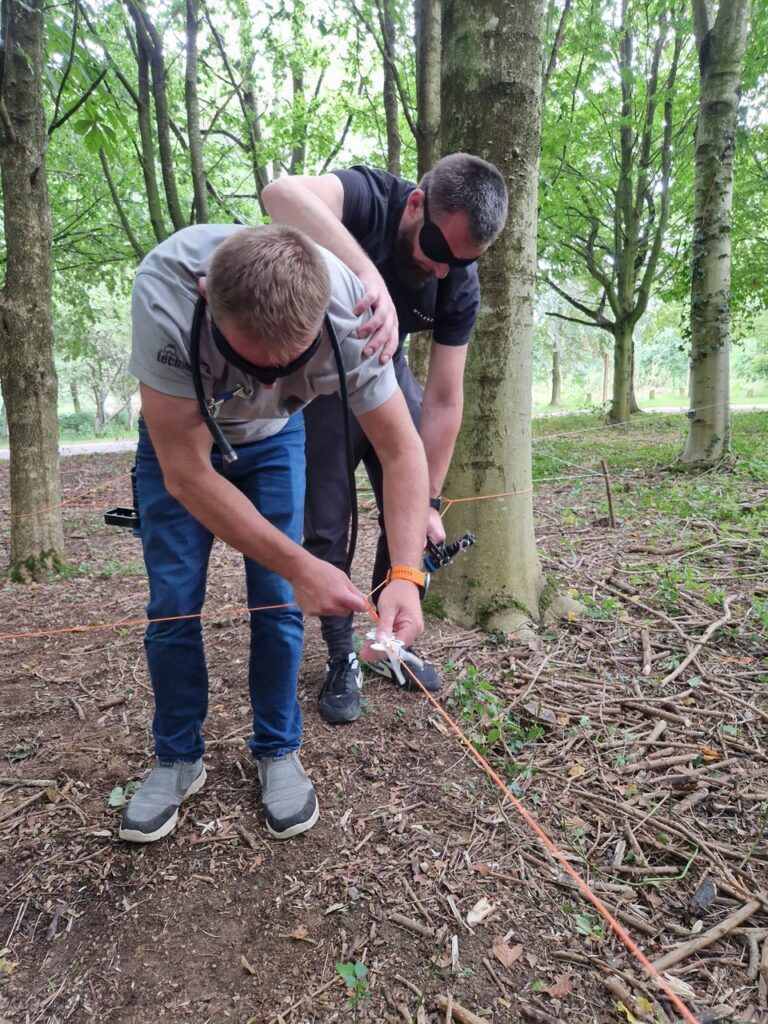
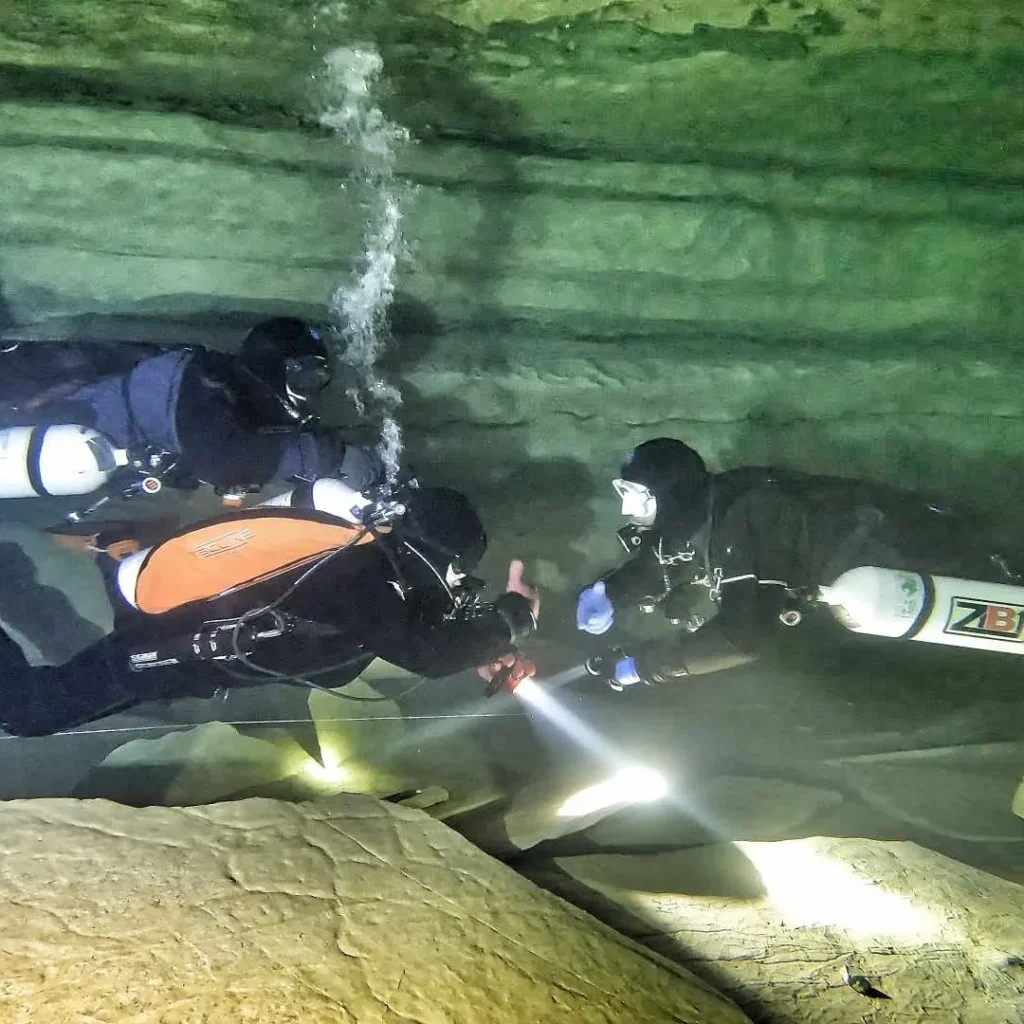
The Intro to Cave course is the next step for those who have completed the Cavern Diver course and wish to enhance their cave diving skills. The course aims to refine techniques learned during cavern diving and introduce new skills necessary for safe cave exploration at a basic level.
Upon completion of the Intro to Cave course, participants will be qualified to dive independently in caves and mines (Mine Diver Level 1), following these rules:
- Maximum depth of 40 meters (130 feet),
- Penetration limited to 1/3 of a single tank or 1/6 of a twin tank setup,
- No decompression dives,
- No penetration into narrow spaces,
- Maintain a continuous guideline,
- Use specialized cave diving equipment.
The course lasts a minimum of two days, includes at least 4 hours of theory, and requires practical dive sessions. Upon completion, divers are ready for the next level and can proceed to the TDI Cave Advanced course.
Full Cave Diver Course – Advanced Cave Diving Techniques

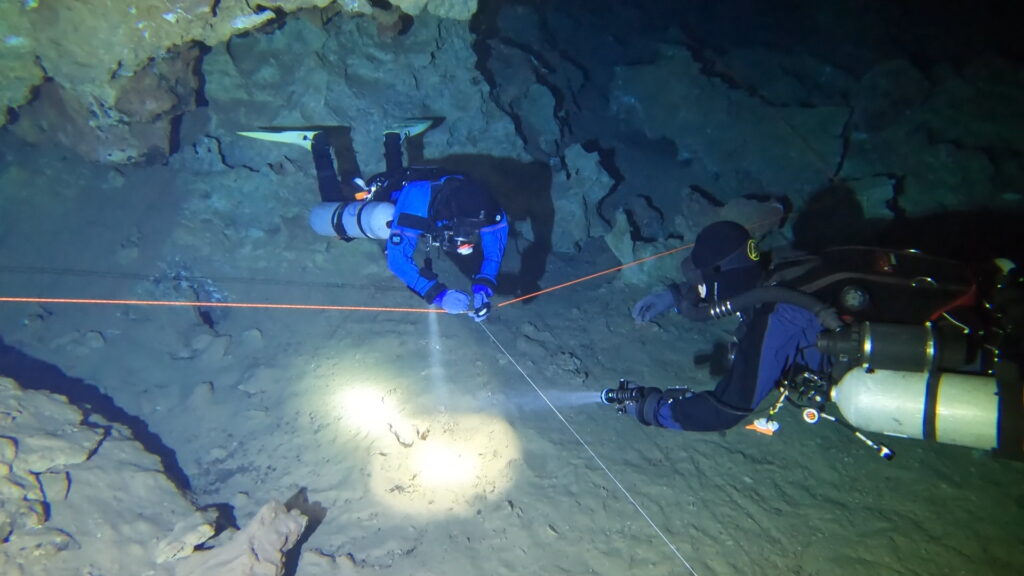
The Full Cave Diver course is the third and most advanced stage in the TDI training system. During this course, divers acquire advanced planning and practical skills for diving in various cave systems, preparing for the most exciting and demanding challenges. This course builds upon techniques learned in the Cavern Diver and Intro to Cave courses.
Upon completion of the Full Cave Diver course, participants can perform decompression dives (if they have relevant certifications from previous courses), and execute jumps, gaps, circuits, and traverses. This also qualifies them to dive in mines (Mine Diver Level 2). If they previously completed only the Mine Diver course, additional crossover training is required for cave diving.
Course Structure and Duration
- Recommended theory and briefing time: 6 hours,
- Required: 8 cave dives with a total bottom time of at least 240 minutes at no less than 3 different locations,
- At least one location should be new and unused in previous Cavern or Intro to Cave courses,
- For divers without previous Cavern/Intro to Cave certifications: 16 cave dives with 420 minutes of bottom time (excluding decompression time).
Cave diving courses are held in France or Spain. The Mine Diver course can be completed without leaving the UK.
Required Equipment for Cave and Mine Diving
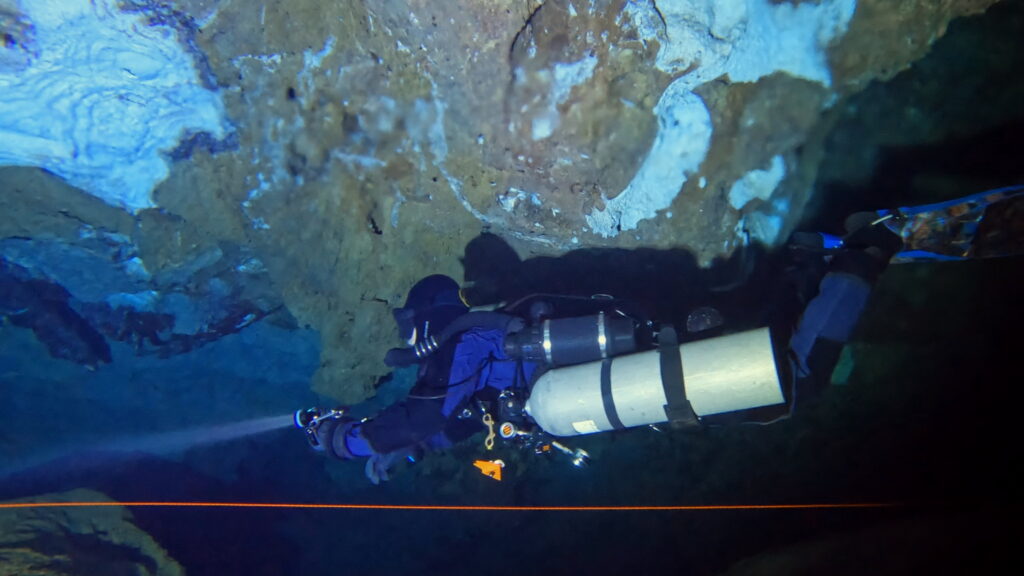
Each course participant should have the following equipment:
- Twin tank setup appropriate for the planned dive and individual gas consumption,
- Two independent regulators (first and second stage), one with a hose of at least 210 cm,
- Manometer,
- Jacket/wing with an inflator,
- Suit suitable for underwater conditions,
- Mask and fins,
- Two independent cutting tools,
- Three torches with batteries – one main and two spares,
- Two spools or safety reels with at least 37 meters (125 feet) of line,
- One main reel for the team with a length appropriate for the planned dive,
- Dive computer, watch, or timer, and depth gauge,
- Slate or wet notes with a pencil,
- Backup dive computer,
- Backup mask,
- Three directional arrows for marking the line,
- Non-directional line marker (cookie),
- Additional spools or reels with enough line for planned jumps and gaps.
Having your own equipment ensures safety and comfort during overhead diving. If you don’t have your own, you can purchase professional cave diving equipment from our store, featuring high-quality brands such as Hollis, Xdeep, Tecline, No Gravity, Apeks, and many others.
Basic Safety Rules in Overhead Diving
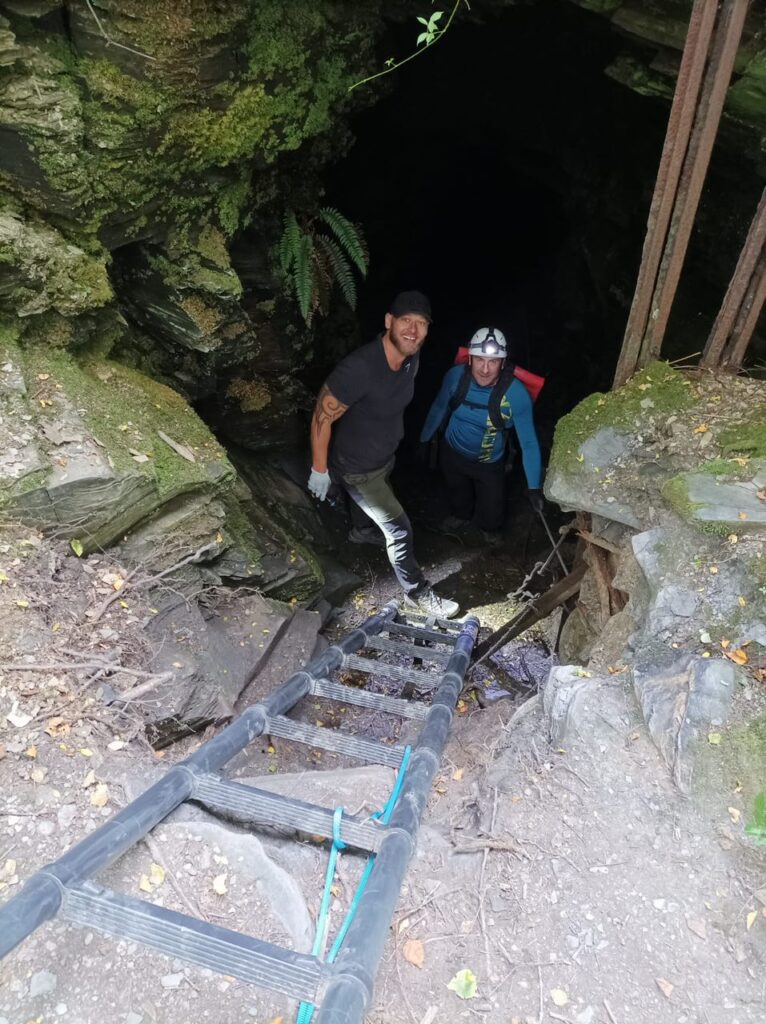

- The "1/3 Gas" Rule – plan your dive so that you consume no more than 1/3 of your gas supply on the way into the cave, leaving two-thirds for the return trip and reserves,
- Continuous Guideline to the Exit – never leave the guideline leading to the entrance; it provides safety and orientation underwater,
- Teamwork – always dive with a partner, maintaining continuous visual contact and communication,
- Gas Planning – plan your dive based on gas usage, dive time, and route. The most common method is the 1/3 gas rule, but for two-person teams, it is recommended to plan with a minimum of 1/4 gas. If the team uses tanks of different sizes, planning must account for each diver’s available gas,
- Logistics Planning – both caves and mines can have complex corridors; it is crucial to plan the route using maps and available information to ensure you can always return to the exit.
Adhering to these rules will allow you to safely explore and enjoy the beauty of the underwater world.
Why Choose No Gravity Divers?
I am an experienced instructor with years of practice in cave diving, mine diving, and overhead diving in the UK. At No Gravity Divers, I specialize in technical training, both decompression and Cave/Mine diving. My approach combines strict safety standards with personalized support to ensure each student gains the necessary skills and confidence.
With us, you will:
- Receive comprehensive support throughout your training path: from Cavern Diver, through Intro to Cave, to Full Cave Diver,
- Learn professional planning and execution of overhead dives,
- Gain practical experience in a variety of field conditions,
- Prepare for diving in mines (Mine diving UK) and caves,
- Obtain certifications recognized in the UK and worldwide, issued by the TDI federation.
If you dream of exploring underground rivers, submerged tunnels, or historic mines, we can guide you through each stage of training.
Trust No Gravity Divers and join the ranks of professional cave divers.

